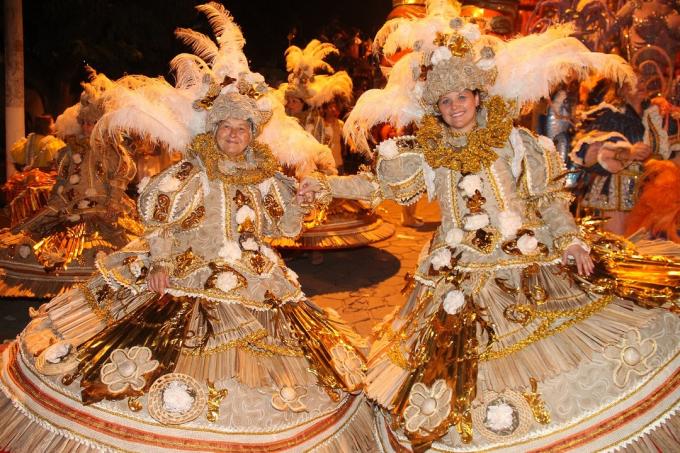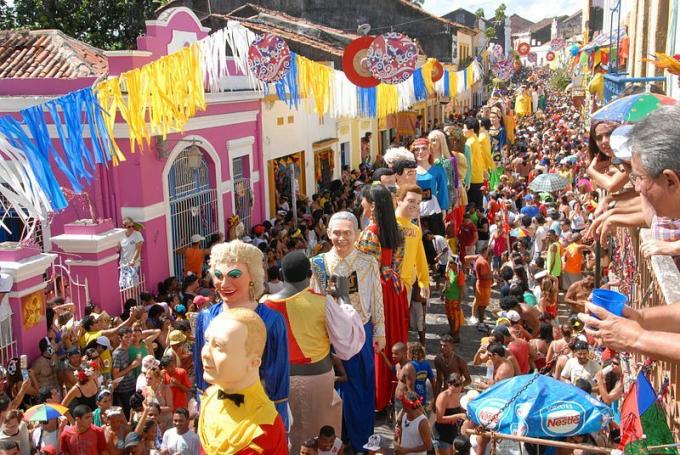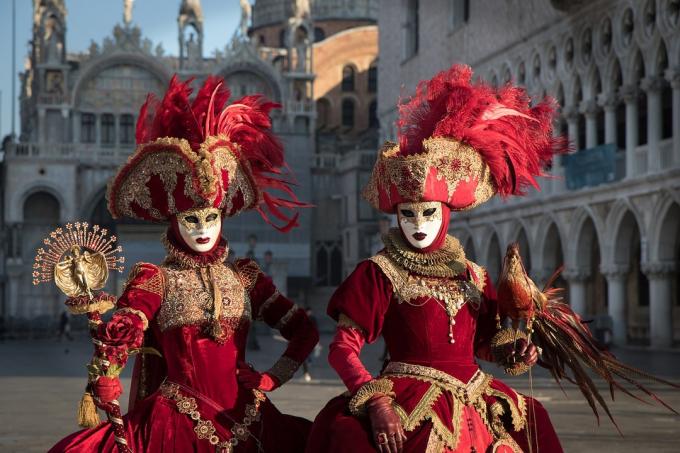carnival or Shrovetide they are the three days of festivities that precede Ash Wednesday. It's a word that comes from the Latin "meat is worth" and which means to say "farewell to the flesh".
Carnival arrived in Brazil through the festivities that took place in Europe, mainly in Italy and France, in the 17th century.
Pierrot costumes (pierrot) and colombina were soon incorporated into the Brazilian carnival.
In the beginning, the carnival parties took place in the streets, with costume parades. Later, they began to be held in clubs, where marches, sambas and frevo prepared for the festivities were played.
 Columbine Design and Pierrot.
Columbine Design and Pierrot.
See also the meaning of Shrovetide.
Origin of Carnival
The origin of Carnival is related to certain rituals of fertility in the land, which were organized on New Year's Eve and at the beginning of spring.
However, with the emergence of Christianity, Carnival lost some of its symbolic and mystical character.
Masquerade balls were created in France only around the 17th century, but they quickly became popular in other European countries.
During the Renaissance, carnival celebrations achieved great popularity, especially in Italy (in Rome and Venice).
In Brazil, despite Carnival having a large tourist component, it still maintains its spontaneity, which was strengthened through popular folklore.
Learn more about Brazilian folklore.
Carnival in Brazil
Currently, some cities stand out in carnival parties in Brazil, where this festivity is considered one of the biggest in the world.
In Rio de Janeiro, for example, it is the parades of the samba schools and in Salvador it is the electric trios that take over the city's streets.
 Carnival in Rio de Janeiro.
Carnival in Rio de Janeiro.
In Recife, the group "O Galo da Madrugada", which takes to the streets on Carnival Saturday and wanders around the city center, has already entered the record books as the largest carnival block in the world.
In Olinda, the highlight is the giant puppets, which parade through the slopes of the World Heritage city.
 Carnival in Olinda, Pernambuco.
Carnival in Olinda, Pernambuco.
The most popular carnival parade takes place in Rio de Janeiro, at Marquês de Sapucaí, where the traditional samba school parade of the capital of Rio de Janeiro.
In a figurative sense, the word carnival can mean “folguedo”, “revelry” or “confusion”. Example:“When the teacher entered the room, she found the biggest carnival”.
carnival holidays
The Carnival holiday takes place 47 days before Easter, always on a Tuesday. Carnival usually takes place in February, but in some years it can fall in early March. See the carnival holiday days from 2020:
- 2020: February 25th
- 2021: February 16th
- 2022: March 1st
- 2023: February 21st
- 2024: February 13th
- 2025: March 4th
Catholic Church and Carnival
Carnival is celebrated 47 days before Easter. This period is called Lent by the Catholic Church, which preserves forty days of fasting, with abstinence from meat.
Carnival takes place during the three days before Ash Wednesday. Carnival Tuesday is popularly called “Fat Tuesday” or "Mardi Gras", as the French say.
Learn more about the meaning of Ash Wednesday, Easter and Lent.
Venice Carnival
Carnival in the city of Venice, Italy, has been a tradition since the 17th century, and its main feature is the masks.
The nobles liked to have fun and, in order not to attract the attention of the people, they disguised themselves hidden behind masks.
The costumes used are still the same as that period: women in richly decorated long dresses and men in livery or black silk clothes and three-cornered hats.
 Masquerade Ball in Venice, Italy.
Masquerade Ball in Venice, Italy.
See also the meaning of popular culture.
